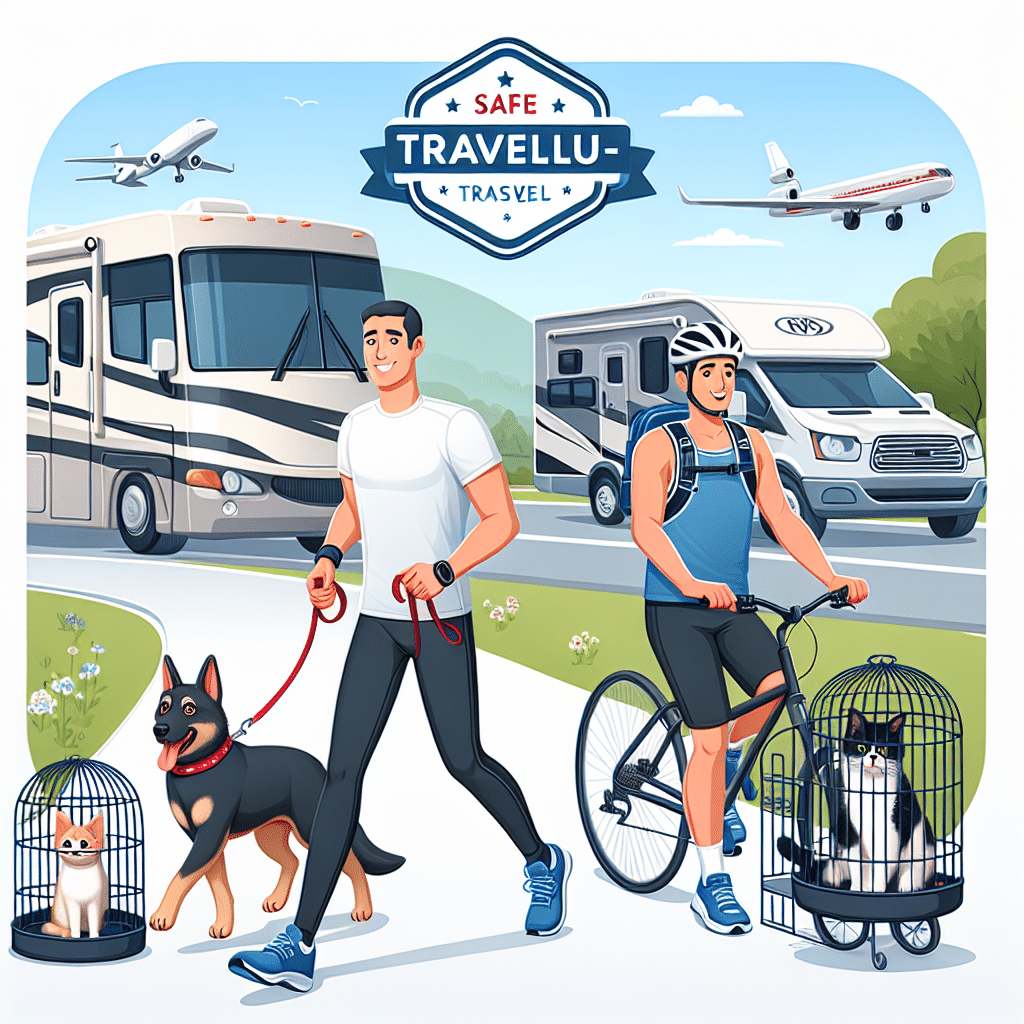Safe Exercise Routines for Traveling Pets: Keeping Them Active and Happy
Traveling with pets often induces a mix of excitement and anxiety. While the sights and experiences are great for humans, it is vital to ensure that our furry companions receive adequate exercise and stimulation throughout the journey. Safe exercise routines can keep pets happy, healthy, and stress-free during travel, making it an enjoyable experience for everyone involved.
Understanding Your Pet’s Needs
Before delving into specific exercise routines, it’s crucial to know your pet’s exercise requirements. Different animals have varying activity levels; for instance, a high-energy breed like a Border Collie requires significantly more exercise compared to a low-energy breed, such as a Bulldog. Additionally, different types of pets have unique preferences. Dogs often enjoy activities that gauge their energy levels, while cats may prefer more leisurely playtimes that involve hunting-style games.
Preparing for Travel
-
Appraisal of Health: Before embarking on any trip, arrange a veterinary check-up. Ensure your pet is fit for travel, especially if there are pre-existing health conditions. Ask your vet if there are any specific exercises or routines that would benefit your pet during your travels.
-
Pack the Essentials: Bring along necessary items such as a leash, harness, toys, water bottles, and portable food bowls. Also, consider packing a mobile first-aid kit specifically designed for pets, which can remedy minor injuries that may occur during travel.
-
Safe Space: Create a secure environment within your mode of transport. Whether traveling by car, plane, or train, having a comfortable, well-ventilated crate or pet carrier protects your pet and allows for a settled journey.
Exercise Routines for Dogs
-
Walking: Walking is an excellent exercise for dogs, providing physical stimulation and mental engagement. Aim for at least two walks per day, varying the locations so that your pup is exposed to fresh scents and sights.
-
Fetch: Bring a ball or a frisbee to engage your dog in a game of fetch. This is particularly suitable at parks or open fields, where ample space allows them to run freely. Be cautious not to overexert them on hot days.
-
Obstacle Course: Create a makeshift obstacle course using items found on your journey. For example, use benches, logs, or rocks to encourage your dog to jump, crawl, and navigate through various terrains. This can be a stimulating activity that boosts their agility.
-
Swimming: If your travel destination features water bodies, such as lakes or dog-friendly beaches, let your dog take a swim. Make sure to supervise and that your pet is comfortable in the water before allowing them to dive in.
-
Tug-of-War: Use a sturdy rope or toy to engage your dog in a fun game of tug-of-war. This not only exercises their muscles but also strengthens the bond between you and your pet. Ensure to maintain proper control and allow for breaks to prevent overstimulation.
Exercise Routines for Cats
-
Interactive Play: Whether it’s feather toys, laser pointers, or small balls, engage your cat in active play sessions. Schedule short, frequent sessions throughout the day to keep them stimulated without overwhelming them.
-
Leashing Walking: Training your cat to walk on a leash can open up new worlds for exploration. Choose a comfortable harness and allow your cat to explore outdoor areas while maintaining control. Stick to safe, enclosed areas to prevent them from escaping.
-
Puzzle Toys: Bring along puzzle toys that stimulate your cat’s cognitive abilities. These can keep them occupied during downtime, combining both mental and physical engagement as they solve for rewards.
-
Climbing Structures: If you are in a location with trees or safe furniture, encourage your cat to climb. A simple baby gate or a cushy spot on a table with supervision can help satisfy their climbing instincts.
Safety Protocols
-
Hydration: Always ensure that your pet stays hydrated, especially if you are visiting warm climates. Carry portable water bowls and refill them regularly, especially after exercise.
-
Temperature Awareness: Structure your exercise routines around the temperature of the day. Avoid vigorous exercise during peak heat hours. Instead, opt for early mornings or late evenings when temperatures are cooler.
-
Signs of Fatigue: Be attentive to your pet’s energy levels, watching for signs of fatigue or overheating, especially in dogs. Allow frequent breaks and monitor your furry friend’s physical responses to different activities.
-
Pet Friendly Areas: Research pet-friendly areas for exercise, like local parks or beaches, and ensure they are safe. Ensure no aggressive animals are around, and always respect leash laws.
Engaging When Stuck Indoors
Weather can sometimes limit outdoor activities. In such cases, get creative with indoor exercise routines. Here are a few ideas:
-
Hide and Seek: Hide treats around the house and encourage your pet to find them. This mimics their natural hunting instincts and keeps them mentally engaged.
-
Stair Climbing: If your accommodation has a staircase, consider performing stair exercises to help burn off energy. Supervise their movements to ensure they’re safe while climbing.
-
Create a Cat Tree: For cats, build a temporary climbing station using pillows or boxes. Cats love to explore new heights and this can aid in both exercise and entertainment.
Conclusion
Traveling with pets can be an enriching experience for both owner and animal if planned correctly. It’s essential to adapt exercise routines to suit the unique needs of your pet and the constraints of travel circumstances. By implementing these safe exercise strategies, you can ensure that your traveling pet stays active and happy throughout your journey, making every adventure together a fond memory.
